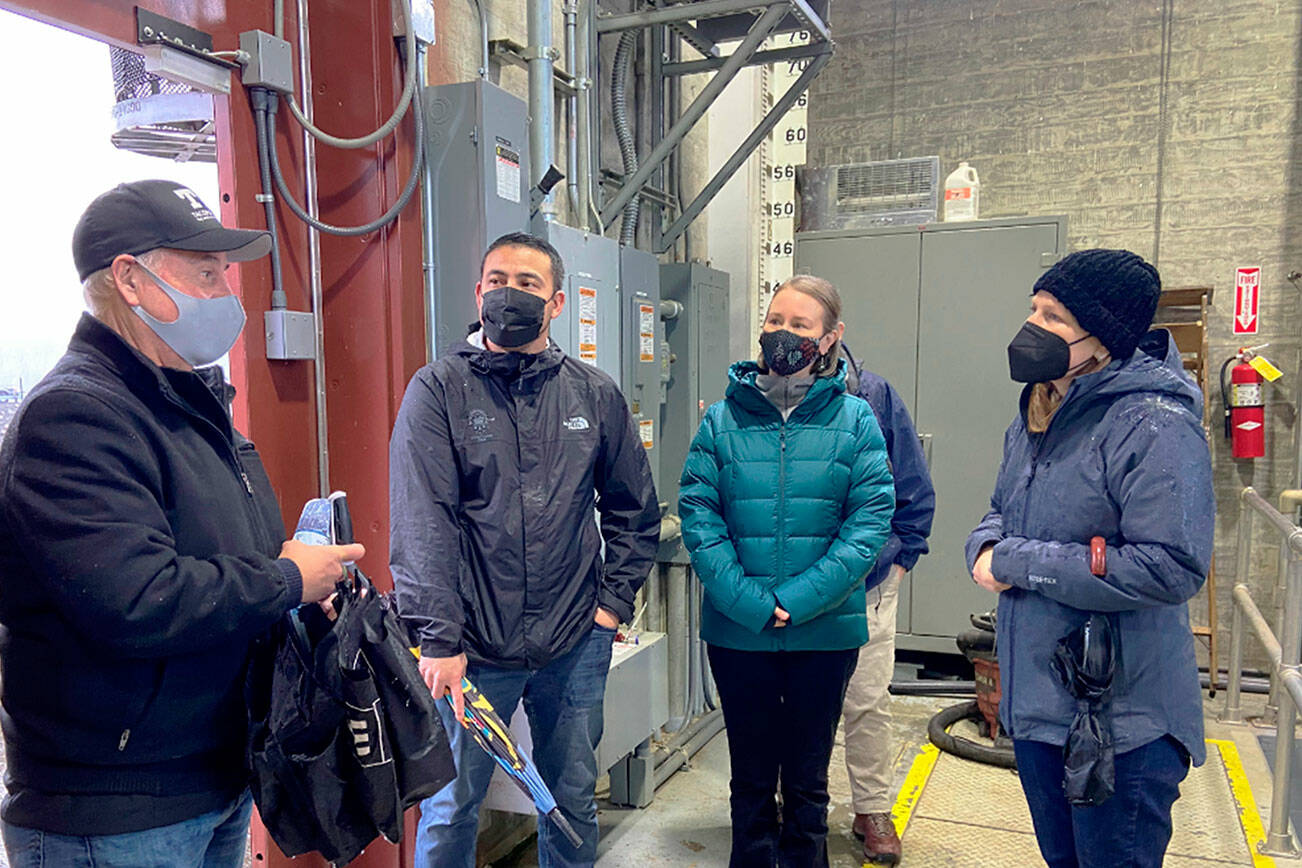The U.S. Army Corps of Engineers will spend $220 million on a fish passage facility at the Howard Hanson Dam along the Green River.
The funding was announced Wednesday, March 30 but approved by Congress and signed by President Biden in November 2021 as part of the $1.2 trillion infrastructure bill.
The dam, about 21 miles east of Auburn, helps protect Kent, Renton, Tukwila and Auburn from flooding. The Green River watershed is the primary water source for the city of Tacoma. Tacoma Public Utilities also sells and supplies water to the City of Kent, the Covington Water District and the Lakehaven Water District in Federal Way.
The project will help maintain flood risk management, increase municipal and industrial water supply to Tacoma Public Utility, and reopen miles of critical salmon and steelhead habitat, according to a March 30 news release from U.S. Sen. Patty Murray, D-WA. The funding will advance work on the fish passage facility for migrating juvenile salmon and maintain dam performance to support the primary water needs for Tacoma and other water districts.
“My job is to make sure the federal government understands that local priorities like the Howard Hanson Dam need to be federal priorities—today the Biden administration is getting the message loud and clear,” Murray said. “This funding will go a long way in our fight to save the salmon, opening up miles of critical habitat. Not only will this money make an important difference as we work to recover our iconic salmon runs and honor our tribal treaty obligations, it will help get clean drinking water to people across Puget Sound and help protect the region from flooding. This is a big victory for the Muckleshoot Tribe, our salmon and orca, the entire Puget Sound, and all of Washington state.”
The Green River becomes the Duwamish River in Tukwila and then flows to the Puget Sound at Elliott Bay in Seattle.
This announcement is part of a larger allocation of $2.7 billion in funding to Army Corps projects throughout the country focused on strengthening ports and waterways. Murray said supporting the Howard Hanson Dam has been a longtime priority for her, including when she secured $44 million in badly needed emergency funds for the U.S. Army Corps of Engineers to repair the Howard Hanson Dam in 2010.
Murray said funding for salmon recovery was an important priority for her when she helped draft and pass the Bipartisan Infrastructure Law or the Infrastructure Investment and Jobs Act in August 2021.
Congresswoman Kim Schrier, D-Sammamish, 8th District, also worked to get funds for the fish passage project.
“I am thrilled to hear that the downstream fish passage project at Howard Hanson Dam is slated for a whopping $220M in infrastructure funding,” Schrier said in a news release. “I’ve been working with stakeholders across the 8th district to ensure this critical project be included in funding from our infrastructure package. This stands to do more for Chinook salmon populations than any other project to date. And that is something Washingtonian care deeply about.”
The White House announced over 300 U.S. Army Corps of Engineering projects that have been funded by the Bipartisan Infrastructure Law. And the Howard Hanson Dam project is one of the largest projects announced on March 30, Schrier said.
The federal government built the rock-and earth-fill Hanson dam in 1961 to control major flooding in the Green River Valley, including the cities of Auburn, Kent, Renton and Tukwila. Water is stored at a reservoir behind the dam – the Eagle Gorge Reservoir.
Fish, however, are unable to pass upstream through the dam in order to find spawning areas in the upper river. Few fish headed downstream survive the dam. The Army Corps started to research building a fish passage in the 1990s, but the project stalled several times due to a lack of funding.
Talk to us
Please share your story tips by emailing editor@kentreporter.com.
To share your opinion for publication, submit a letter through our website https://www.kentreporter.com/submit-letter/. Include your name, address and daytime phone number. (We’ll only publish your name and hometown.) Please keep letters to 300 words or less.

